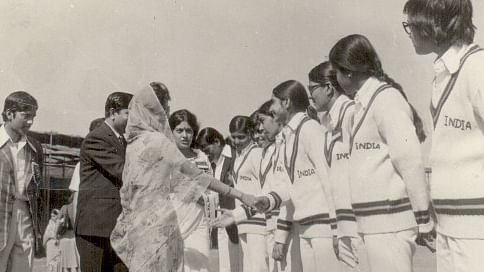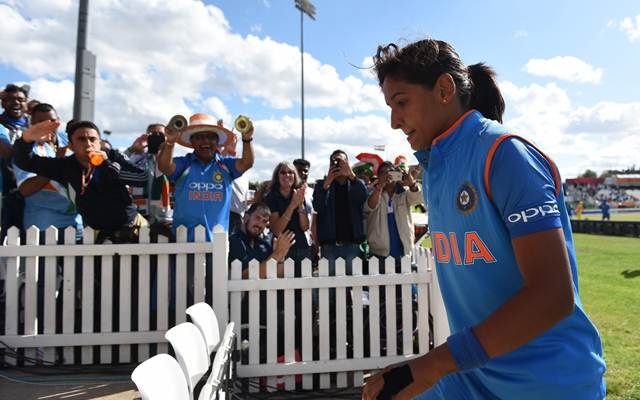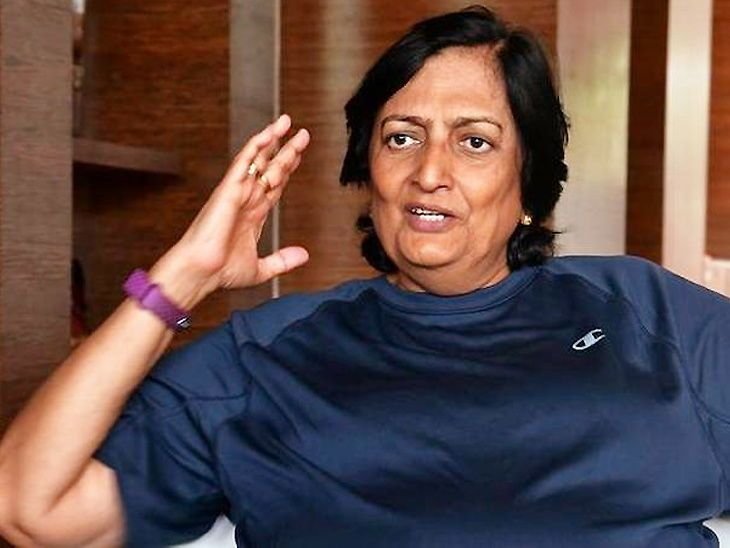Not many would identify the women in this picture (Source: Twitter). Not even the most ardent cricket fans. Even though she is the woman of many firsts in Indian cricket. This is Shanta Rangaswamy. The first captain of the Indian women’s cricket team. First to win a test match, first Indian woman to hit an international century and also the first recipient of BCCI’s Lifetime Achievement Award for Women in 2017.
When asked about her achievements, Shanta said, “I feel proud, but not for me personally. It’s an achievement for women’s cricket.”
Not so long before she received the award, former BCCI President N. Srinivasan had said, “If I had it my way, I wouldn’t let women’s cricket happen”. He retained this viewpoint throughout his tenure. Ironically, in a country where the game is celebrated as a religion, it’s practice and portrayal has been gender-biased.
While the Women’s Cricket Association was formed in 1926, the first women’s test match played in 1934, women’s cricket in India was played on ad hoc basis till the 1970s.
In 1973, Mahendra Kumar Sharma, a sports enthusiast was involved in national handball and softball tournaments in Hyderabad. Some of his female students saw a few boys playing cricket in the nets and asked if they could give it a try.
It was at this point that Sharma hit upon the idea of creating a cricket association for women in India.
Later that year Sharma as the founder secretary registered the Women’s Cricket Association of India (WCAI) under the Lucknow Act. He further wrote to the English Women’s Cricket Association, which resulted in the International Women’s Cricket Association granting affiliation to WCAI.

Source: Sunil Yash Kalra
In 1976, the first international women’s team, West Indies arrived in India for a six-match test series. Led by Shanta Rangaswamy, the hosts defeated the visitors in front of more than 25,000 spectators in Patna in the third test and took a 1-0 lead in the series.
Though West Indies went on to beat India in the final Test match at Jammu and the series ended in a draw.
India hosted the second Women’s World Cup in 1978 but the Indian women’s team failed to leave their mark on world cricket for a long time, neither winning overseas nor getting past the group stages of the World Cup.
The women’s cricket got further left behind in the storm after men’s cricket team lifted the Prudential Cup at Lord’s.
Until in 1997, as second-time hosts, Indian eves went on to the World Cup semi-finals losing to Australia only by a margin of 19 runs. The final between Australia and New Zealand was watched by 80,000 people at the Eden Gardens.
Three years later, India reached the semi-finals again in Australia and the tide turned completely in 2005, when they reached final for the first time, under the leadership of the 22-year old Mithali Raj. This was followed by WCAI being merged into the BCCI in 2006, which was by then the richest cricket board.
Indian women’s cricket reached the pinnacle 11 years later when Harmanpreet Kaur’s blistering 171 run innings inspired India to the World Cup final in 2017.

Photo Source: Twitter
Though the final was lost by nine runs against hosts England, more than 1.9 million people tuned in to watch the game, which was more than the average viewership for a men’s cricket match. The tournament television viewership was around 100 million.
A growing fanbase and a third time T-20 semi-final finish in 2018 gave birth to the Women’s T-20 challenge, a league of their own.
After years of struggle, ignorance and garnering all the interest they could without international silverware, Indian women’s cricket team were one step away from winning their first international silverware.
On Sunday, March 8, 2020, Indian Eves faced the defending champions and hosts, Australia, in the T20 World Cup final. As expected, the blue wave took over the 95,000 capacitated Melbourne Cricket Ground. It was hardly of any help as India were decimated by 85 runs while chasing 184. The conclusion did not fit the campaign. The blues had reached the final by winning all four group stage games, including the opener against Australia. The semi-final against England got washed off by rain, and India progressed based on their group stage performance.
After everything that women’s cricket in India has achieved and went through, a trophy and a celebration would have been sweet. But perhaps the wait will one day be worth it. Perhaps there is an epic triumph that awaits us. We’ll have to chin up and be patient. This team does have the names capable enough to take that final step.



Leave A Comment